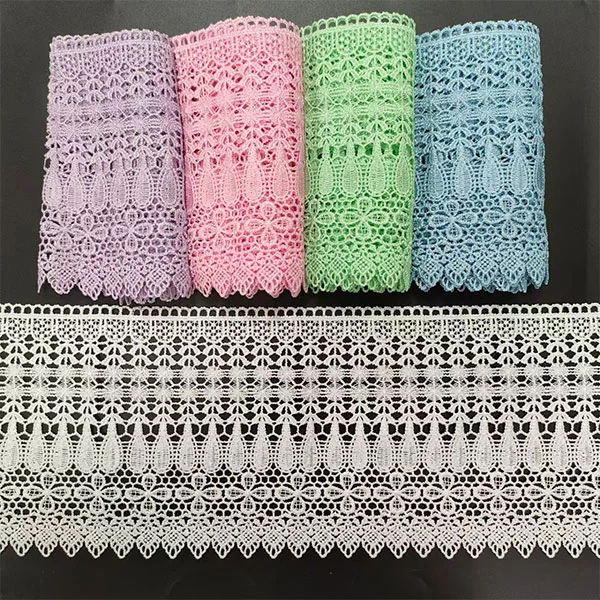How Is Lace Traditionally Made?
2025-04-09
Lace, with its intricate patterns and delicate charm, has long been a symbol of elegance and craftsmanship. But behind every beautiful piece lies a fascinating process rooted in centuries of tradition. Before industrial machines took over, lace-making was an entirely handcrafted art form requiring patience, skill, and creativity.
In this blog, we'll explore how lace was traditionally made, the methods used, and the remarkable artistry behind this timeless textile.

What Is Lace?
Lace is a delicate openwork fabric created by looping, twisting, or knotting threads in a patterned way. It’s often used in fashion, home décor, and even ceremonial garments due to its refined appearance.
Traditional Lace-Making Techniques
There are several traditional techniques used to make lace by hand. The two most prominent are:
1. Bobbin Lace (Pillow Lace)
Bobbin lace is one of the most well-known traditional forms.
- How it works: The lace is made by twisting and crossing threads wound on bobbins.
- Tools used: A pillow (usually round and firm), dozens of bobbins, and pins to mark the pattern.
- Process: The pattern is pinned onto the pillow, and threads are manipulated over the pattern using a rhythmic sequence of twists and crosses. The pins hold the threads in place while the design is built up.
This technique originated in the 16th century and became especially popular in countries like Belgium, France, and Italy.
2. Needle Lace
Needle lace is the most intricate and time-consuming type.
- How it works: Created entirely with a needle and single thread, this lace is formed stitch by stitch.
- Tools used: A needle, linen or silk thread, and a backing fabric or parchment.
- Process: The design is drawn on parchment, which is then attached to fabric. Outlines are created using thread, and the inner areas are filled in with various needle stitches like buttonhole or looped stitches.
Needle lace was especially prized in Renaissance Europe and often used for royal garments and church vestments.
Other Traditional Methods
- Crochet Lace: Made using a hook and yarn, this lace is more modern but still handmade.
- Tatting: Made using a shuttle or needle, this technique creates lace with a series of knots and loops.
- Knitted and Knotted Lace: Involving special patterns using knitting needles or knotting techniques like macramé.
Materials Traditionally Used
- Linen thread was the most common, prized for its strength and smooth finish.
- Silk thread was used for finer, more luxurious lace.
- Cotton came later as a more accessible alternative.
- In some cases, lace was even made with gold or silver threads for royal use.
The Cultural Significance of Handmade Lace
Lace-making was often a cottage industry in Europe, especially for women. Entire communities were known for their lace, such as Brussels, Chantilly, and Burano. The skill was passed down through generations and was not just a craft, but a form of economic independence and artistic pride.
Final Thoughts
Traditional lace-making is a beautiful blend of technical mastery and artistic expression. Whether crafted with bobbins, needles, or hooks, each piece tells a story of meticulous labor and timeless elegance. While machines can replicate lace patterns today, the charm and uniqueness of handmade lace remain unmatched—reminding us of the rich heritage behind every delicate strand.
If you ever get the chance to see lace made by hand or try a workshop yourself, take it—you’ll gain a whole new appreciation for this enduring art form.


